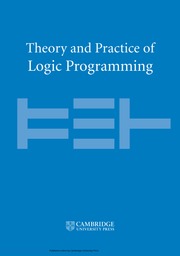Article contents
A parameterised hierarchy of argumentation semantics for extended logic programming and its application to the well-founded semantics
Published online by Cambridge University Press: 10 January 2005
Abstract
Argumentation has proved a useful tool in defining formal semantics for assumption-based reasoning by viewing a proof as a process in which proponents and opponents attack each others arguments by undercuts (attack to an argument's premise) and rebuts (attack to an argument's conclusion). In this paper, we formulate a variety of notions of attack for extended logic programs from combinations of undercuts and rebuts and define a general hierarchy of argumentation semantics parameterised by the notions of attack chosen by proponent and opponent. We prove the equivalence and subset relationships between the semantics and examine some essential properties concerning consistency and the coherence principle, which relates default negation and explicit negation. Most significantly, we place existing semantics put forward in the literature in our hierarchy and identify a particular argumentation semantics for which we prove equivalence to the paraconsistent well-founded semantics with explicit negation, WFSX$_p$. Finally, we present a general proof theory, based on dialogue trees, and show that it is sound and complete with respect to the argumentation semantics.
Keywords
Information
- Type
- Regular Papers
- Information
- Copyright
- © 2005 Cambridge University Press
- 9
- Cited by

